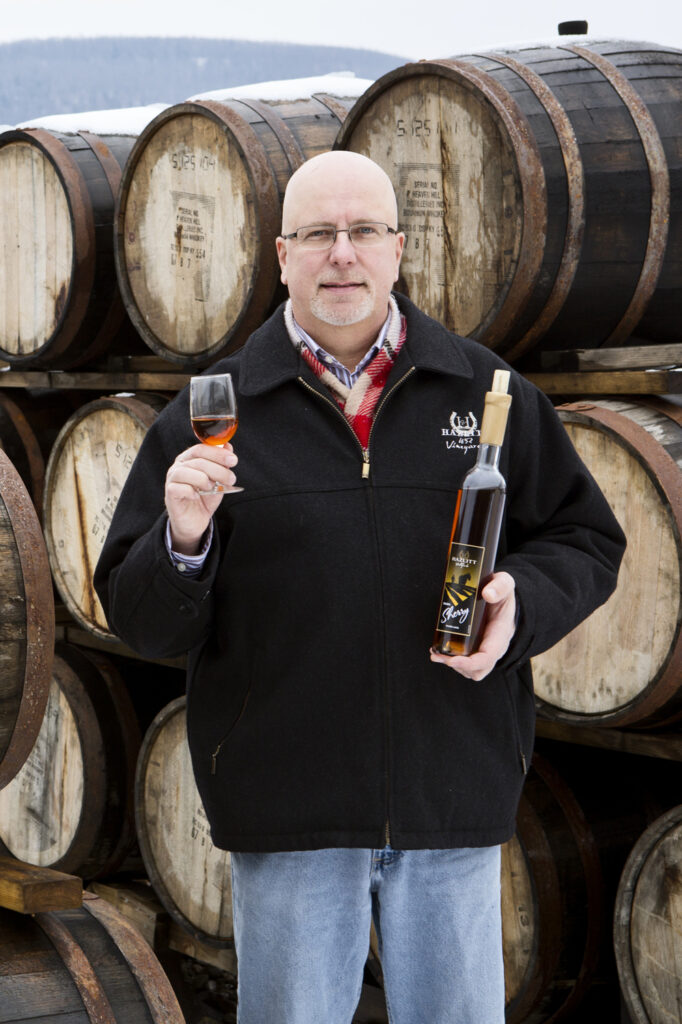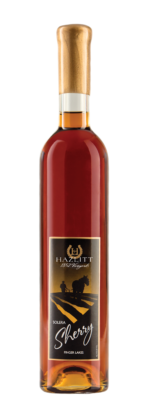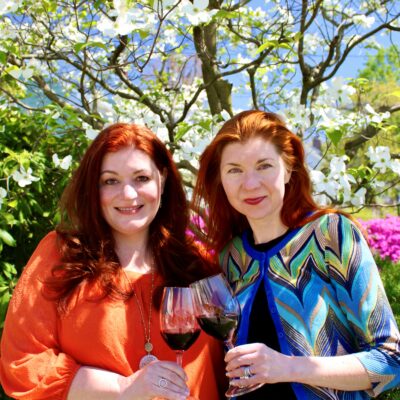Hazlitt 1852 Vineyards has a long agricultural history that goes well beyond wine. The winery’s name itself reveals a bit of its story.
In 1852, the Hazlitt family purchased 153 acres in Hector, NY, already planted with fruit trees and vineyards. And while grapes thrived there for more than a century, the winery itself didn’t come along until 1985.
In the 37 years since the family became winemakers, Hazlitt 1852 has grown into one of the largest family-owned wineries in the Finger Lakes. They opened a second location in 2011, Hazlitt Red Cat Cellars in Naples, where they produce one of the state’s most popular wines, Red Cat.

Now, the family can proudly add winning the Governor’s Cup, the top award at the 36th annual New York Wine Classic, to their growing list of accolades and accomplishments. Awarded to the winery with the entry judged “Best of Show” of all wines submitted, Hazlitt earned the honor for its Solera Sherry. This year, the Governor’s Cup was an unexpected tie, and Hazlitt shares the celebrated prize with Long Island’s Wölffer Estate Vineyard for its 2020 Diosa Late-Harvest. Both wineries also tied for Best Dessert Wine.
Winemaker Tim Benedict came to Hazlitt close to 17 years ago. He appreciates that he and his team—Michael Riedy, the current vinifera winemaker, and senior winemaker Erik Brasher who oversees all of the custom crush production at the Naples facility— are able to craft so many styles of wine because of the different focuses the two production facilities have.
“The southeastern slope of Seneca Lake seems to be a few degrees warmer than anywhere else short of Long Island. It seems to be an epicenter of perfect terroir and conditions to grow grapes like fine vinifera,” says the winemaker.
At the estate facility along Seneca Lake in Hector, Benedict produces wines made with estate-grown vinifera—grapes like Riesling, Cabernet Franc, Pinot Gris, Sauvignon Blanc, and Grüner Veltliner.
At the Red Cat facility along Canandaigua Lake, Benedict produces the lambrusca-based sweeter wines from grapes sourced from local growers, hard ciders, port-style wines, and the award-winning sherry, something he came to Hazlitt with the experience to make.
“I had some history working with ports, sherries, ice wines and late harvests, so we started playing around with some of those and the port and sherry really kind of stuck,” says Benedict. But, the tale of making sherry at the current winemaking facility didn’t start with him.
“Part of the story is that when we purchased our facility in Naples, New York—which used to be owned by Constellation brands—there was a long history of sherry making with the barrels on the roof of the facility, going way back to the 1920s and 30s.”
Winemakers at the time would pump the sherry up to the roof to age in previously used whiskey barrels. The sun would “bake” the sherry, caramelizing the sugars and giving the wine a honey and apricot character. The sun also caused quite a bit of evaporation in the barrels. To minimize that evaporation, the barrels were eventually moved to an unheated and uninsulated barn in the 1980s.
That history of rooftop sherry making at the facility intrigued Benedict. After seeking out expert advice, he decided to move the winery’s sherry program onto the roof in 2012.
“It accelerated my learning to be able to talk with some of the retired winemakers from that facility that still lived in the area. I was fortunate to be able to have conversations with them and get a few tips on recipes which elevated our game,” he says.
The winery purchased old whiskey barrels, filled them with sherry, and put them on the roof. Like his predecessors, Benedict found the loss from evaporation undesirable, and he eventually moved the barrels off the roof. He found the baking process didn’t change much, less sherry evaporated, and the barrels stayed in better shape.
There’s a little bit of that rooftop 2012 sherry in the bottle that won the Governor’s Cup. Because Benedict uses the solera method to make the sherry, in theory, there’s also most likely a few drops of Hazlitt’s first sherry vintage in there—1988.
The award-winning Solera Sherry is made from Concord and Elvira grapes. Elvira is a neutral grape that’s fairly high in acid that works well blended with the creaminess of the Concord. Benedict finds that over the long time that sherry ages, the acidity helps keep some backbone in the wine.
Benedict and the Hazlitt family are pleased with the recognition they’re getting from the award.
“The Governor’s Cup always seems to be the one award that gets the most attention, the most buzz. It’s a big deal. It’s the first time for Hazzlit to have this honor and the first time for me as winemaker also. It’s so satisfying for me to be able to finally say we’ve won,” Benedict says.
Others in the region are happy about it, too.
“I’ve had some people approach me and say thank you for representing the native grapes and winning a big award,” he says, “because those grapes don’t get that kind of recognition very often,”

Hazlitt 1952 Vineyards Solera Sherry
- Vintage: NV
- Style: Cream Sherry
- Region: Finger Lakes, New York, USA
- Fermentation: Traditional fermentation method
- Ageing: 7-20 years in neutral wine barrels
- Final Analysis: 19.0% R.S. 22.0% alc. 9.70 g/L TA 2.93 pH
- Bottled: 10/20/21 227 gal. (143 cases)
Winemaker Notes: Notes of raisins, toasted almonds, candied apricots, toffee and caramel. Full bodied and moderately sweet, this wine is allowed to weather in outdoor casks for years to achieve its amber color and nutty flavor.
Food Pairings: Rich dessert, bitter chocolate or a fine cigar

About the New York Wine Classic
Organized annually by the New York Wine & Grape Foundation, the New York Wine Classic celebrates a diverse selection of world-class wines from producers within the State. Judging for this year’s competition took place from April 15th – June 15th, 2022 and included 694 entries from 101 wineries from across the state. A total of 7 Platinum, 234 Gold, 324 Silver, and 110 Bronze medals were awarded.

